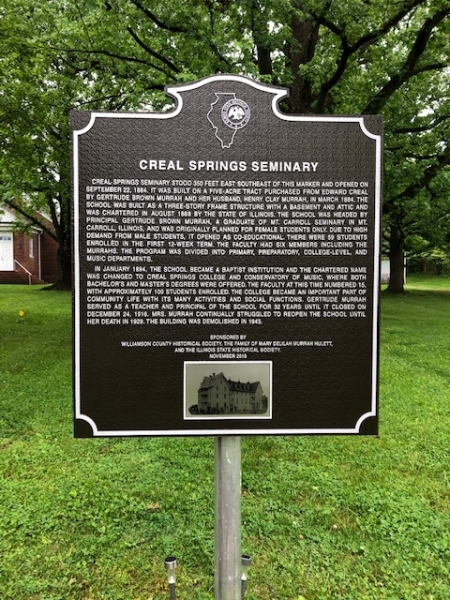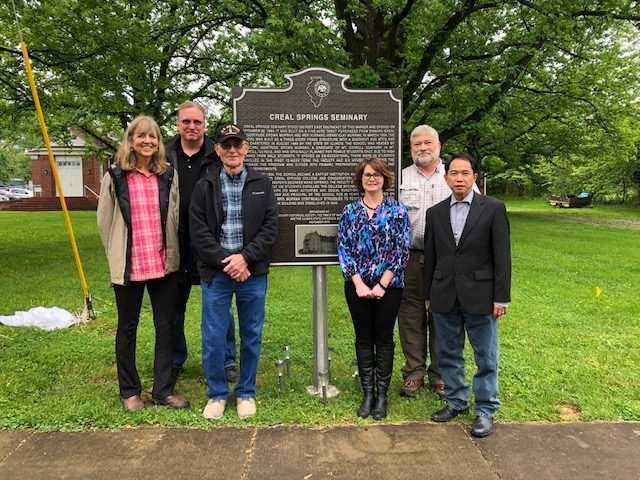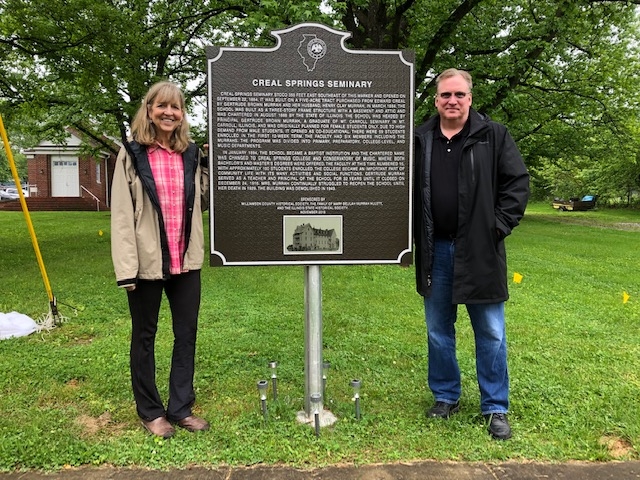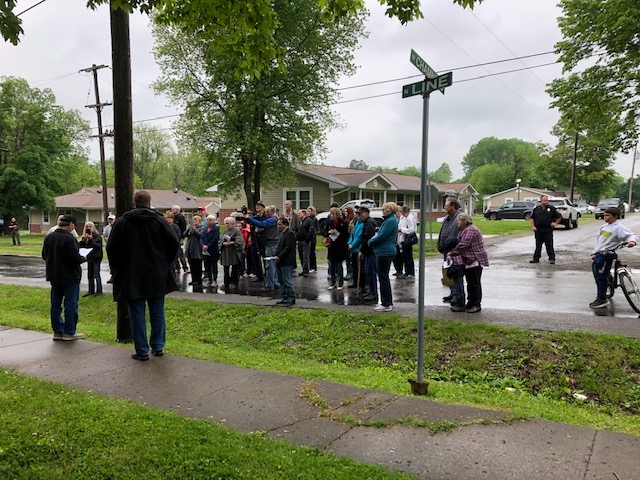The weather cleared up just long enough for over forty people to attend the dedication of an historical marker dedicated to Creal Springs College on Saturday, May 11th , 2019 at 2 P.M. The marker was dedicated at 206 Line Street in Creal Springs which is now property owned by the Methodist Church of Creal Springs.
The college was opened on September 22, 1884 by Gertrude Brown Murrah and her husband Henry Clay Murrah and operated until its closing on December 24, 1916. The college was originally intended to be female only but, after so many boys applied became co-educational. The school was originally a 50 x 30 foot wooden structure with three floors, a basement and attic but had large wings added to it in 1890 and 1895.
In January 1884, the school became a Baptist institution and the name was changed to Creal Springs College and Conservatory of Music where both bachelors and master’s degrees were provided. The faculty at one point numbered 15 and had 100 students enrolled. Since the college wasn’t large enough to house all of the female students, many of the female and boy students rented space in residential homes throughout Creal Springs. The college became an important part of community life with its many activities and social functions.
During the Saturday dedication service, Williamson County Historical Society President, Sam Lattuca recounted the college’s history and lives of its founders while, Micah Morrow, Mayor of Creal Springs gave welcoming remarks. James Hulett and Becky Bowling, great grandchildren of the college’s founder, Gertrude Murrah, were present and James Hulett spoke about how his family was grateful that the college and its impact on Creal Springs was finally being credited. Mark Motsinger of the Illinois State Historical Society gave closing remarks about how important it is to mark historical locations and how easy it is to allow important places and people to fade away from memory as generations pass.
The marker is the first historical marker to be placed in the county that is sanctioned by the Illinois State Historical Society.




